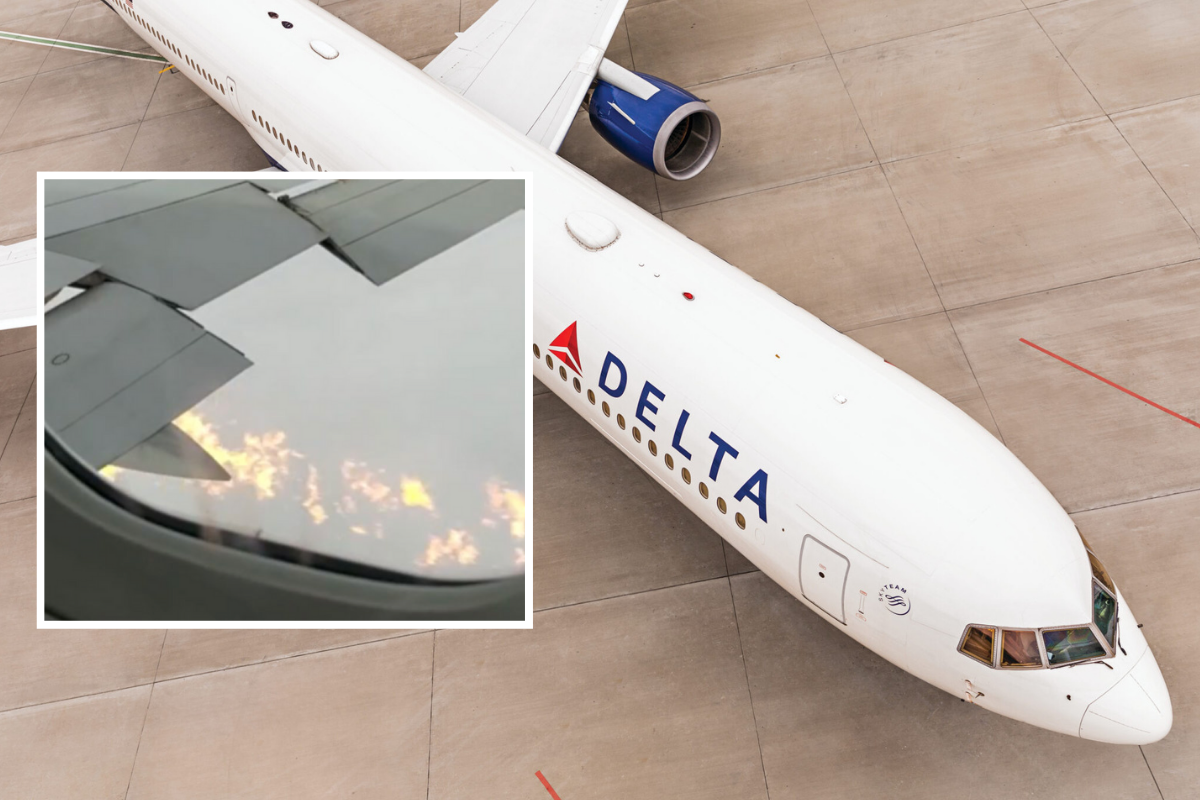
British aviation accident investigators have piled even more pressure on embattled aircraft manufacturer Boeing after they called on the company to prove that its 767 airplanes comply with certification requirements for large passenger planes following a ‘serious incident’ involving a Delta Air Lines jet.
The call was made on Thursday following the publication of a Safety Recommendation bulletin from the British Air Accidents Investigation Branch (AAIB) into an emergency landing that occurred on February 10, 2023.
The incident involved a 26 year old Delta Air Lines Boeing 767-300 which was due to fly from Edinburgh Airport to New York JFK with 211 passengers and 10 crew members onboard.
During takeoff, one of the high-pressure turbine fans in the right-hand engine fractured, and this blade then damaged five further blades. Although the engine was still producing thrust, the damage caused a lot of vibrations, which caused a fuel drain tube to fracture in the right-hand wing.
That fracture meant that after landing, fuel was escaping from the wing onto the ground below and very close to the hot brakes. Emergency services rushed to the scene and managed to contain the fuel away from the brakes, but accident investigators fear that a serious fire could have broken out if the fuel had been blown on the brakes.
Initially, the pilots didn’t notice anything was wrong with the plane but the flight attendants noticed a ‘continuous loud vibration’ and ‘rattling’ sound during taxi and takeoff.
The purser attempted to call the pilots but couldn’t initially get through to them as they were busy completing their takeoff procedures. It was only after takeoff, however, that the pilots started to receive computer alerts that something was wrong with the right-hand engine.
After talking to the purser, a spare pilot went into the cabin to check what was happening but didn’t notice anything unusual. Nonetheless, the Captain decided to initiate a diversion, and they headed towards Prestwick Airport in Scotland.
Due to it being an overweight landing, the Captain requested airport fire services meet them on arrival, before noticing big vibration from the engine. Around the same time, a passenger filmed yellow flames shooting out of the engine.
The plane landed safely at Prestwick but air traffic controllers noticed what appeared to be fuel leaking from the right hand wing. At the time, the wind was blowing the fuel towards the hot brakes.
Airstairs were quickly attached to the front of the plane and the passengers were ordered to get off the plane, leaving all their luggage behind. It took around 5 minutes and 20 seconds to get everyone off, as the airport fire brigade put in containment measures to stop the fuel reaching the brakes.
“As a result of this serious incident the aircraft manufacturer has taken safety action to launch a project to review the design of the draine tube for potential reliability improvements,” the AAIB said on Thursday.
“At the time of publication of this report, the manufacturer had found that there was no increased risk to a catastrophic outcome from a failed drain tube”.
The AAIB has asked the Federal Aviation Administration (FAA) to review Boeing’s analysis that a failed drain tube could cause a catastrophic outcome. The engine manufacturer told accident investigators that there had been two similar incidents and in both cases, the drain tube had fractured.
Mateusz Maszczynski honed his skills as an international flight attendant at the most prominent airline in the Middle East and has been flying ever since... most recently for a well known European airline. Matt is passionate about the aviation industry and has become an expert in passenger experience and human-centric stories. Always keeping an ear close to the ground, Matt's industry insights, analysis and news coverage is frequently relied upon by some of the biggest names in journalism.








Boeing doesn’t make engines and your article does not make a single mention of the engine manufacturer. This article is pure clickbait.